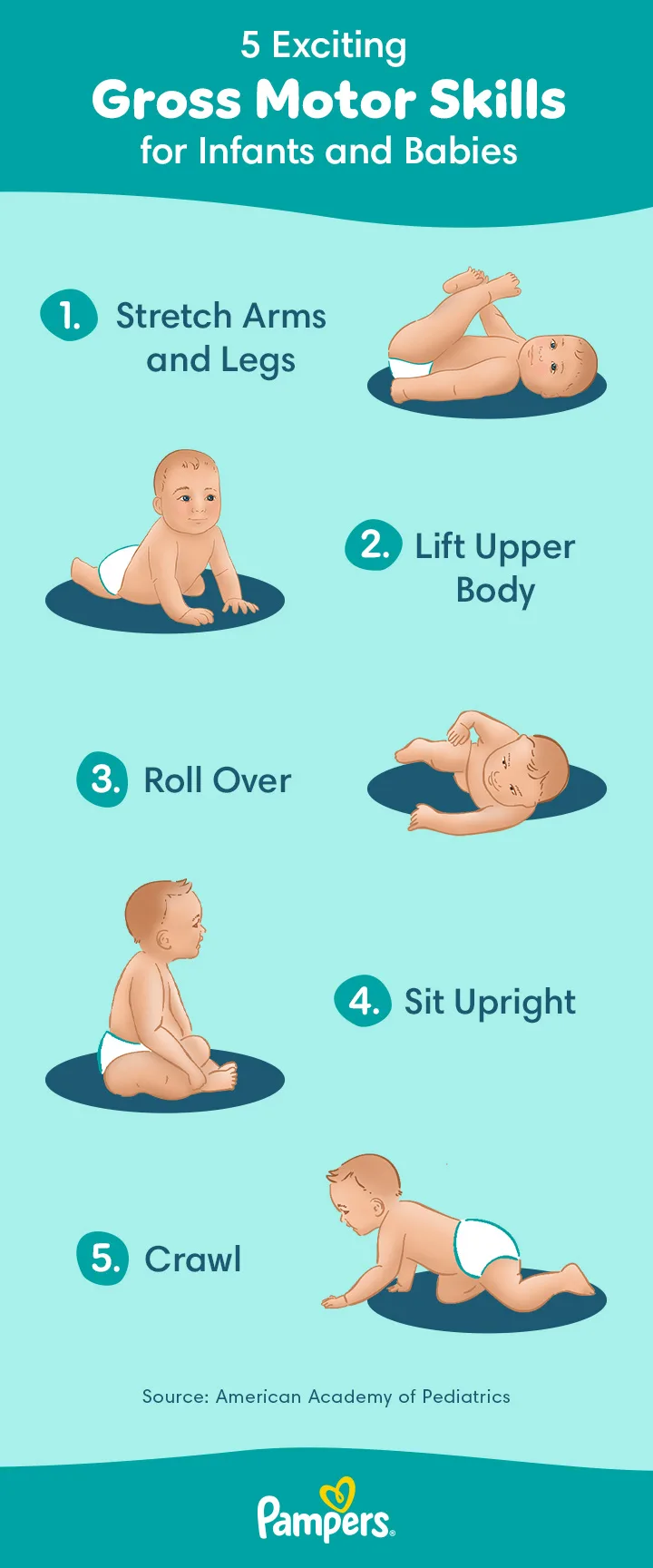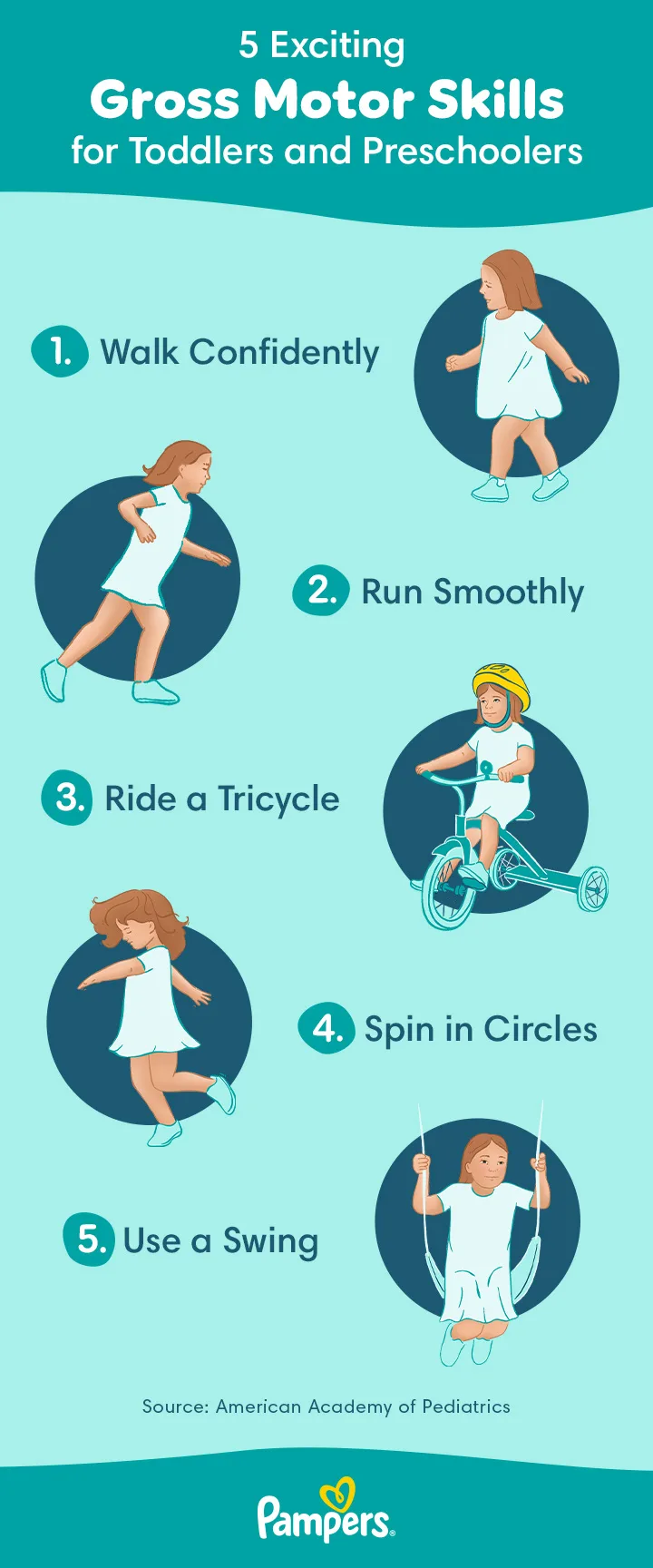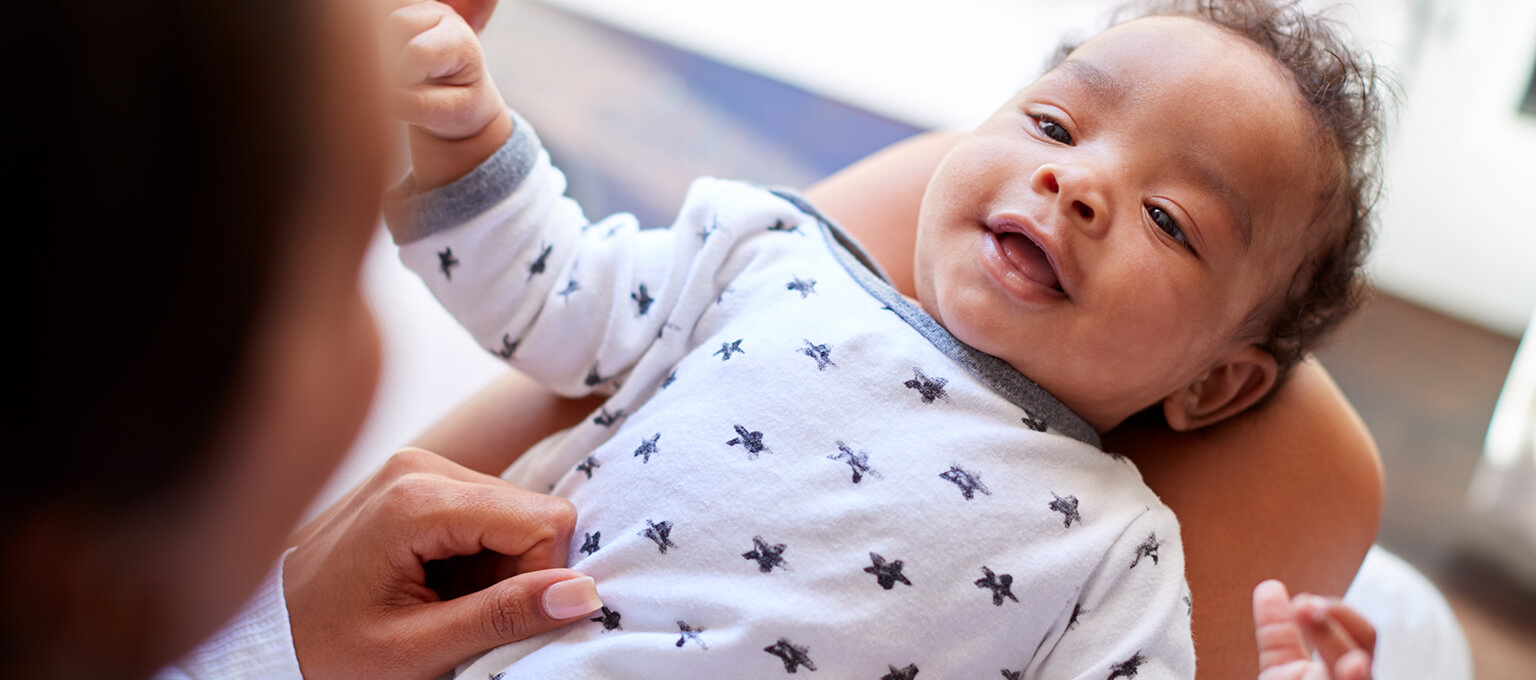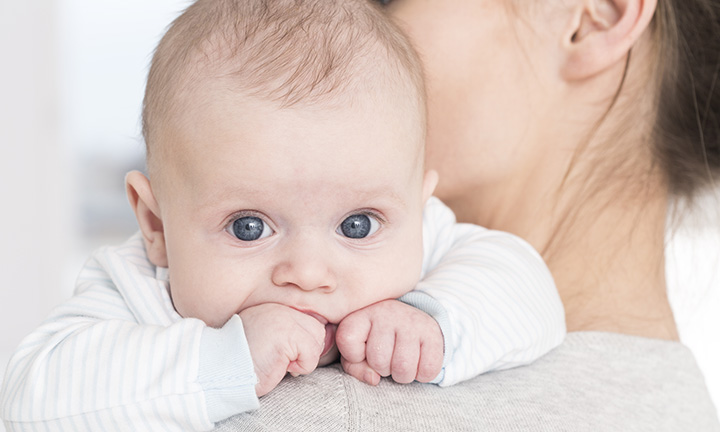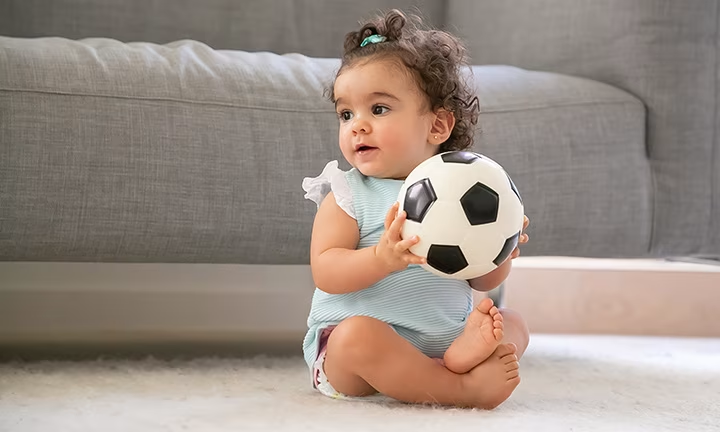
Gross Motor Skills Development in Babies and Toddlers
Gross motor skills are an important part of your child’s development, from infancy to the busy preschool years. Rolling, sitting up, crawling and learning to walk are all big milestones in your child’s growth. This article will help you to look out for and encourage these important steps towards independence as well as providing tips on how you can support your baby or toddler as they hone their skills and start to explore the world around them.
What Are Gross Motor Skills?
Gross motor skills are the big movements that your child makes as they develop and strengthen their muscles, learning to balance and coordinate their movements. These start with holding up their head, rolling, swiping and kicking. As your baby starts to get more active, they will start to coordinate these gross motor movements, learning to sit up without support, crawl, wave their arms and start to walk. Your child develops their gross motor skills over time, learning to coordinate their movements with the support of healthy muscles, bones and nerves.
Difference Between Fine and Gross Motor Skills
You may have heard of one or both of these terms, and indeed, they are a little different. Gross motor skills in early childhood come from the large body muscles, such as those in the arms and legs, and are characterised by strong movements like kicking, wriggling and moving the head. Your child could use all of its body for these movements. Fine motor skills are much smaller, more precise movements that a child makes with, for instance, his or her fingers and hands. These could be picking things up, turning buttons on a toy or fiddling with things. Both fine and gross motor skills come from the complex coordination of body muscles and the nervous system, including your child’s brain. Gross motor skills are tremendously important: your baby will develop them before fine motor skills as these are the skills needed to move independently. These skills will continue to aid the growth and development of your little one even as he or she starts to hone his or her fine motor skills and progress through the physical milestones for their age. Below are some examples of the differences between gross and fine motor skills:
Gross motor skills: strong movements such as rolling over, sitting up, crawling, waving arms and legs, standing up alone, walking, running and jumping, riding a bike or pushing a wheeled toy.
Fine motor skills: grasping objects in the hand, picking things up between the fingers, stacking blocks, eating food without help (using fingers, a spoon or fork), drawing and scribbling, cutting (using safety scissors), zipping clothing, tying things.
Gross Motor Skills From Birth to Toddler
The motor skills listed above will develop in time as your child progresses from baby to toddler and pre-schooler. Motor skills that are important for your baby, like swiping, rolling and crawling will progress to walking, running and climbing in a toddler – and expect to be kept on your toes as your toddler becomes an active pre-schooler. Each age will have its own appropriate stage of gross motor skills development. Here are some gross motor skills milestones that you can look out for in your growing baby: 2 months: your baby will turn their head from side to side, wave arms and legs, wriggle
4 months: baby will raise their head, hold their head without support when sitting, can hold hands together
6 months: sitting up without support, rolling from back to tummy, trying to crawl, playing with their feet, swiping at things
9 months: baby can sit up from lying down and may start to crawl now, they may try to pull themselves up to stand and can roll about with ease
12 to 18 months: from around his or her first birthday, your little one will go from shuffling around on their bottom and standing up alone to walking (but probably falling a lot), crawling up stairs and pushing toys round Remember that although quite a few children learn to walk at about 12 months of age, everyone is different: some will be quicker and some will take their time in learning this new skill.
Gross Motor Skills From Toddler to Pre-Schooler
This is the time when you will be kept on your feet at all times, running after an active toddler as they find their own way around and start exploring. 2 years: your toddler will have started running around and will enjoy climbing on the sofa or anywhere else they can reach! They will be able to go up and downstairs (with your help) and will be able to navigate around things. They will enjoy push-along toys and toys that can be ridden on. 3 years: running fast, jumping, trying to catch balls, climbing and using play equipment… 3-year-olds need lots of opportunity to practise these newfound gross motor skills and your local park could come in handy right now. 4 to 5 years: your pre-schooler will be able to go up and down stairs one foot at a time, hop, skip and jump around with good coordination and balance on one foot. They will be able to pedal a trike and will probably enjoy catching and throwing a ball. They may be able to swing themselves on a swing and will be climbing strongly.
Activities to Develop Gross Motor Skills
Watching your baby grow into an active child is exciting and fun. You can play games with them and enjoy activities like walking, swimming and cycling as they practise their newfound skills. These skills can be helped and encouraged by you, too; there are lots of activities that will help your child achieve his or her gross motor skills milestones. Activities for babies can be fun, too. The following are a few ideas for things that you can enjoy together.
Gross Motor Skills Activities for Babies
Gross Motor Skills Activities for Toddlers and Pre-Schoolers
Little children enjoy their independence and mobility, and can usually keep themselves busy from morning till night. They may find it fun to meet and play with their peers, and you may find yourself taking them on playdates to meet other children to play with. Younger children tend to play alongside each other rather than interacting – this is what is called parallel play – and this too can involve gross motor skills activities. Below are some ideas for games and activities you can do with your child, alone or with their young friends.
Playing outdoors. Toddlers can be tremendously energetic, and what better place for them to let off steam than going outdoors? Running around the garden or in a park will help them to build strength and fine-tune their gross motor skills. They will also enjoy climbing frames and play equipment. Keep an eye out for your toddler while he or she runs, as children of such young age can still easily trip and hurt themselves.
Creative and interactive play. At about 3 years of age, your toddler might be less interested in simply running around and may start to take an interest in specific activities. Playing games with a ball, like catch, or spending time with toys in a sandpit will help your child to develop his or her gross motor skills. Children also love to dance to their favourite music.
Housework and playing shop. Children love to copy us and many cannot wait to pick up a brush or mop to help out with the housework. If your child seems interested, let them have a go: maybe give them a cloth so that they can wipe things, or let them brush up. Children also like to play games based on cooking, shopping, fetching and carrying things. They may want to help with the washing by bringing you clothes, or help you prepare simple food items. They find chores interesting and while they are being helpful, they are developing skills and coordination too!
Delay in Gross Motor Skills
Children typically start to develop motor skills from the top (their head) down to their feet. This means that your baby’s first strong movements will be moving and controlling their head, followed by their upper body. This leads to rolling over, and so on. Children develop at different rates, so don't be surprised if your child doesn’t reach gross motor skills milestones at the exact ages suggested above. Look out for steady progression instead. If you have questions about what your child is or is not doing at a certain age, or if you are concerned about possible delays in gross motor skills, you can always talk to your health visitor or GP. All children develop and learn skills at different rates.
FAQS AT A GLANCE
Lifting the head, waving arms, wriggling and kicking. Later on, crawling, walking, running, jumping and climbing, amongst others.
The Bottom Line
Children grow and develop at different rates, and as you follow your child's own unique path, you’ll have plenty of gross motor skills development milestones to celebrate. From your baby turning their head to look at you to pushing up on their arms at tummy time, each new skill is helping them towards being able to get about independently. It is exciting when your child learns to bottom-shuffle or crawl, and those first hesitant steps are a joy to watch. Some of the best moments of parenthood are when your child learns a new skill, like catching a ball, riding a tricycle or bike – and even turning somersaults on the grass! But remember, if you think your child is slower than others in learning to crawl, stand or walk, they are probably doing everything in their own time and there is nothing to worry about. Your health visitor or GP is always there to talk to if you have any concerns. By the time your toddler turns into a pre-schooler, you will most likely be rushing to keep up with them as they dance, climb and run around everywhere!
How we wrote this article
The information in this article is based on the expert advice found in trusted medical and government sources, such as the National Health Service (NHS). You can find a full list of sources used for this article below. The content on this page should not replace professional medical advice. Always consult medical professionals for full diagnosis and treatment.
Read more about Toddler
Related Articles
Join Pampers Club and get:


